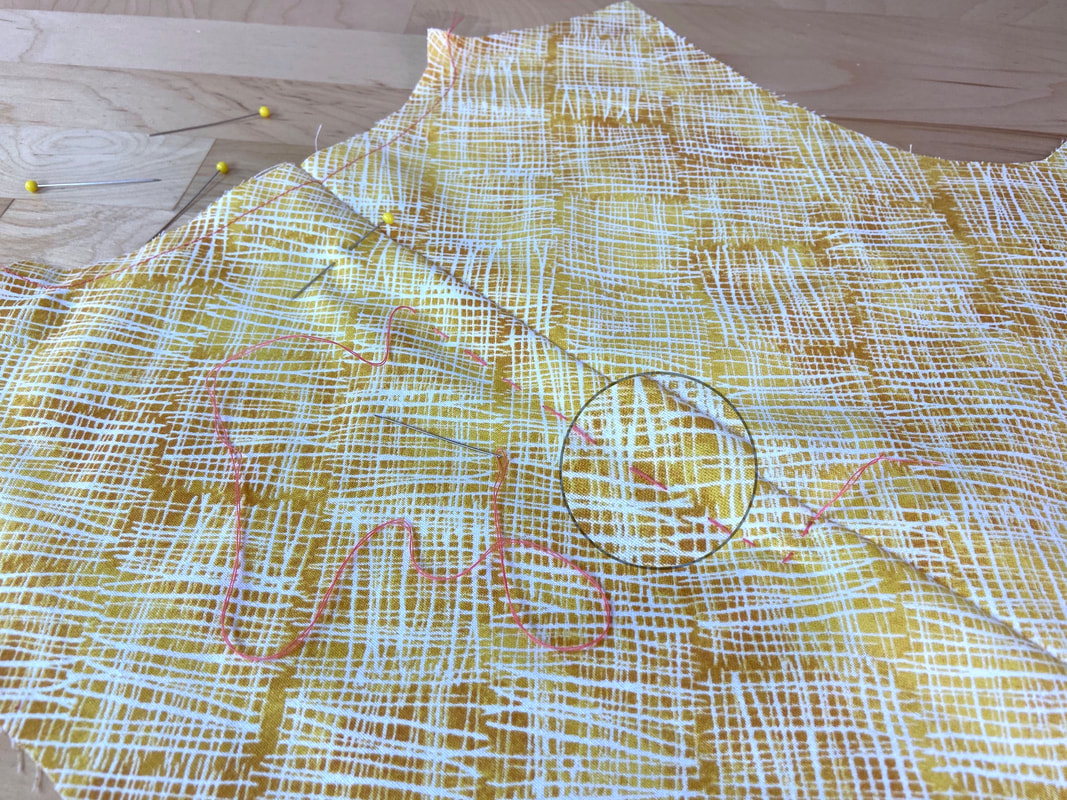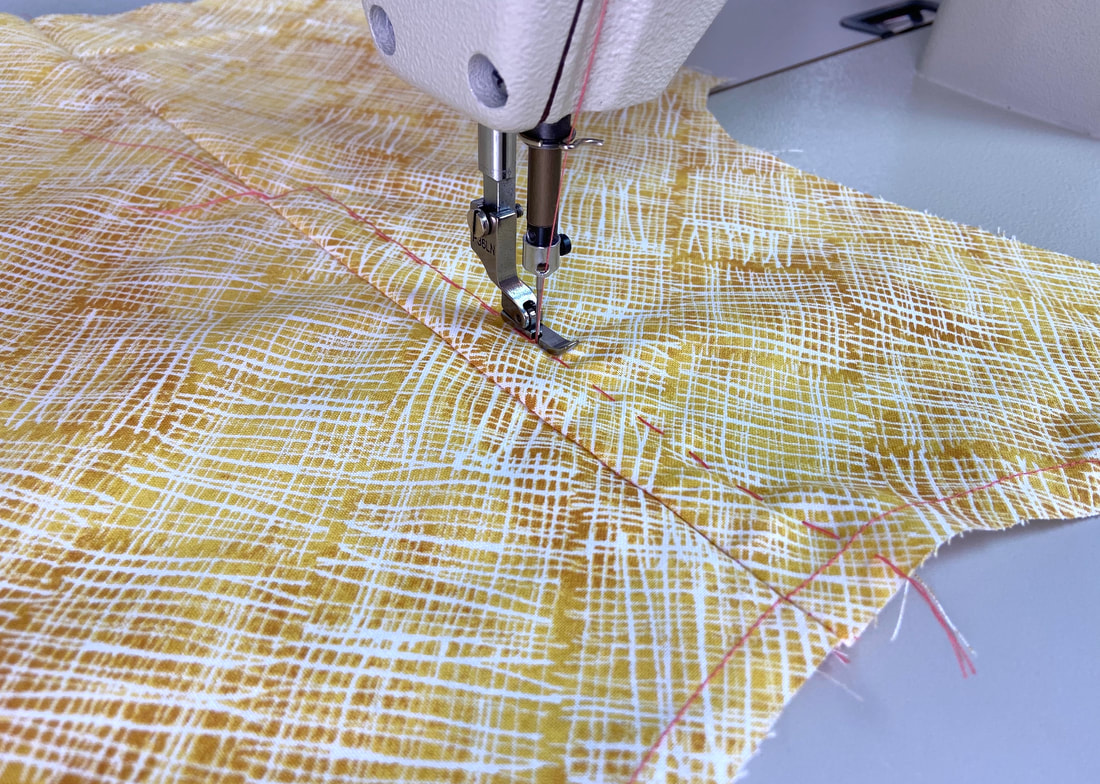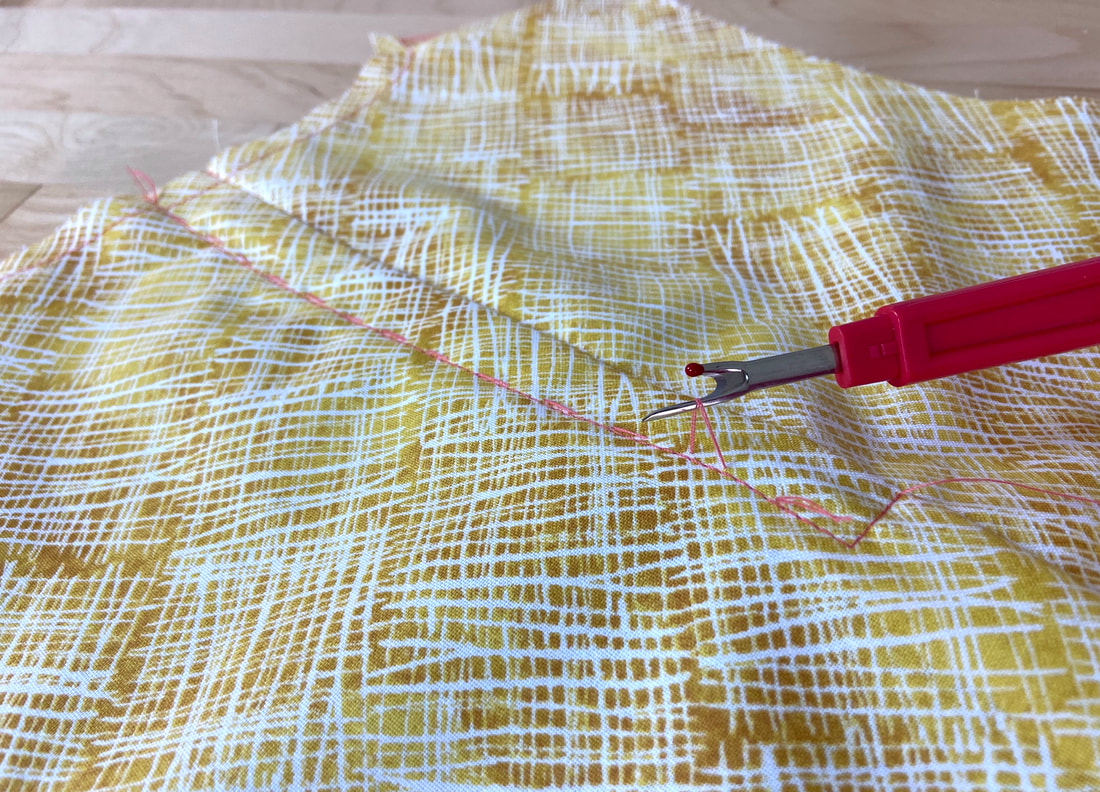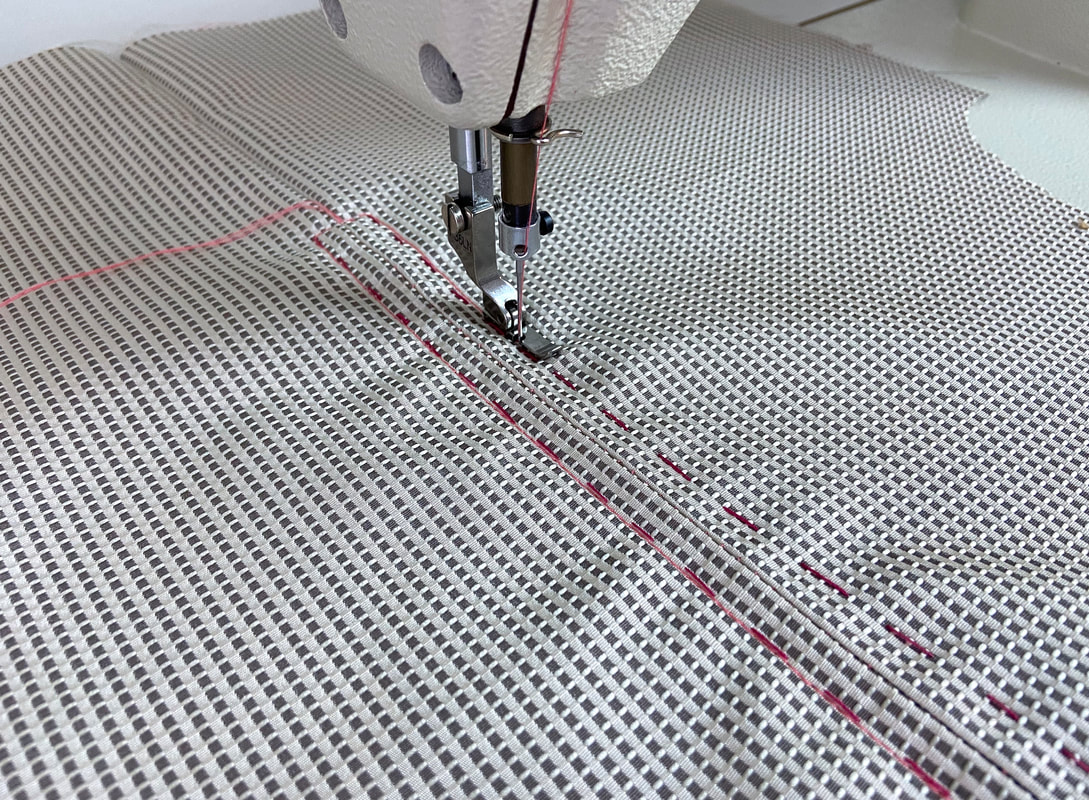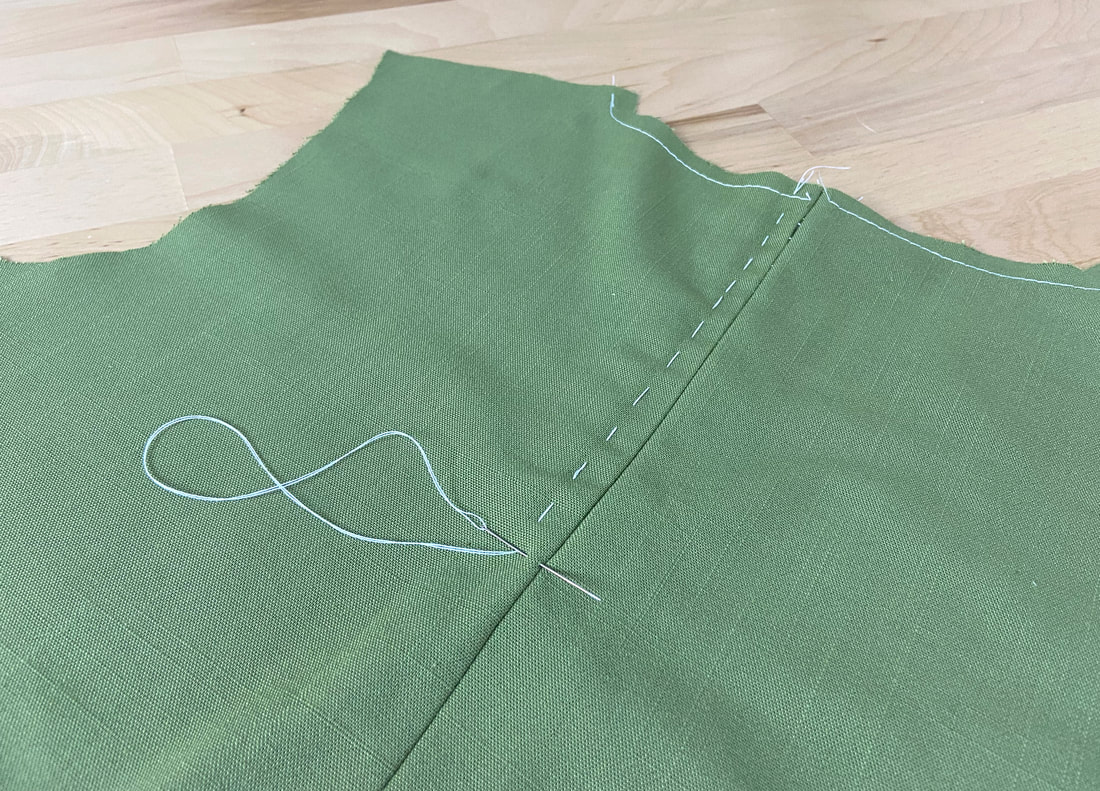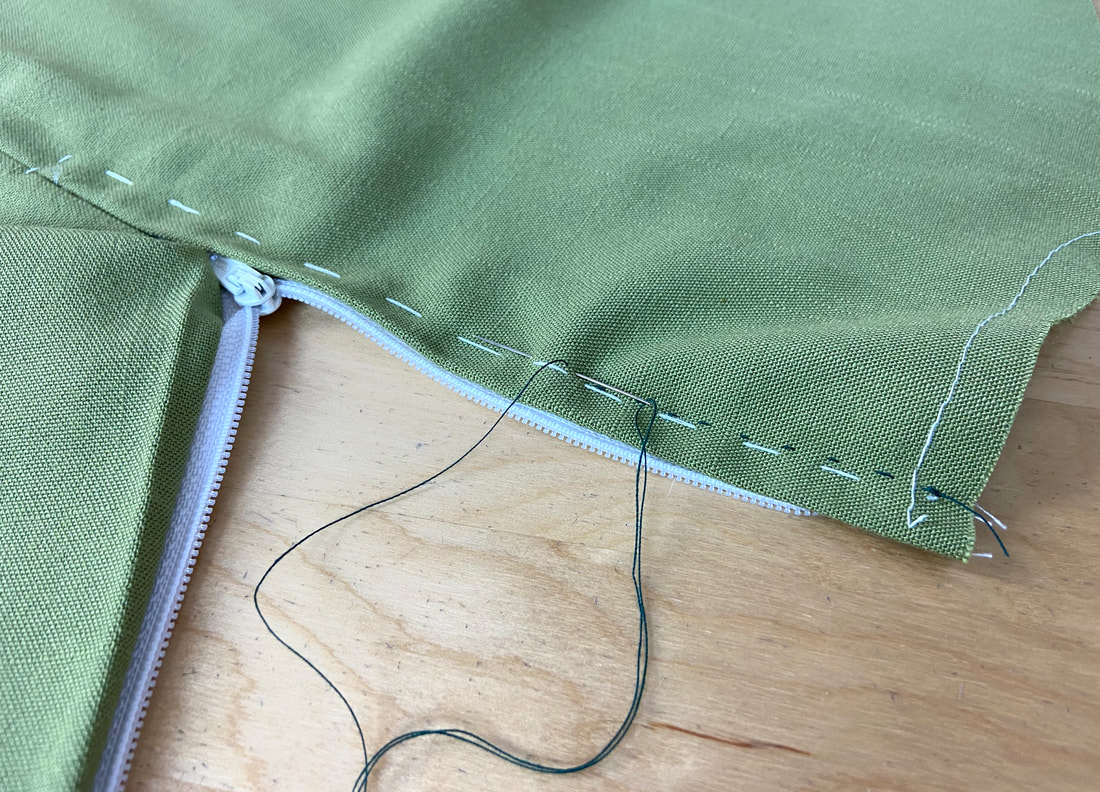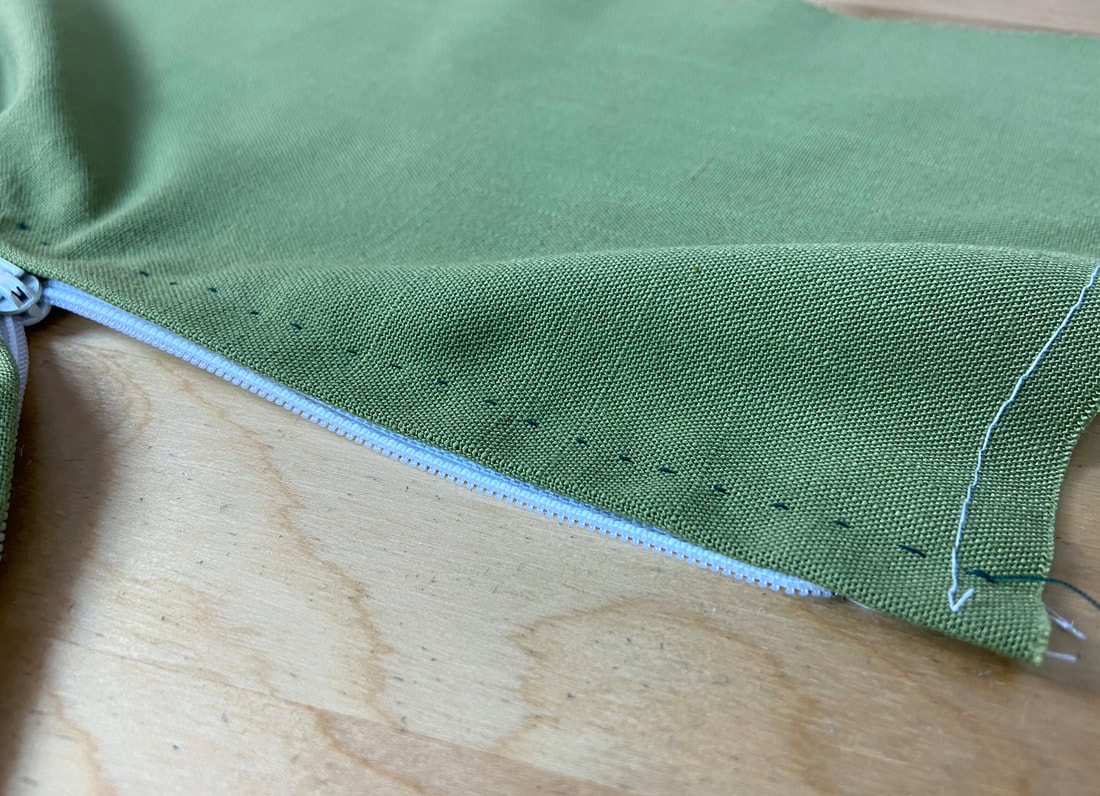Sewing Tip: Hand Baste Zipper Plackets Prior To Topstitching Them
If you've ever tried to free-hand topstitch a zipper placket without following a marked guide, you'll quickly find that this is easier said than done (even as a more seasoned dressmaker). As with most things in dressmaking, hand basting, once again, comes to the rescue.
Sewing Tip: hand baste the zipper placket at the exact location and shape of the desired final topstitch, then use it as a guide in the machine stitching process. The hand basted placket lines will not only provide a machine stitching guide, it will also keep the garment, zipper tape and all seam allowance layers smooth and flat during the stitching process.
When stitching the zipper placket, start your topstitch at the bottom of the zipper application, then pivot and stitch upwards to complete the zipper placket.
While the hand basted line serves as an exact stitching guide, you should avoid stitching directly on it as this will make it quite difficult to remove once the topstitching is complete. Instead, stitch right next to the hand basting (at a threads width distance if possible) so you can easily remove it using a seam ripper when no longer needed.
When sewing a centered zipper, which features two equally positioned topstitched plackets, apply the hand basting on both sides of the seamline. Each side is then stitched separately starting at the bottom zipper opening (directly on the seamline) and pivoting upwards to complete each topstitch.
You can use hand basting to mark a zipper placket regardless of whether the zipper's placket is machine topstitched or hand stitched using a prickstitch or blindstitch.
When applying a prickstitch by hand, the hand basting serves as a stitching guide allowing you to apply the individual stitches evenly and at an equal distance from the zipper closure. Additionally, the hand basting keeps the garment and zipper tape layers perfectly flat for a smoother stitch application.
Once the hand basting is removed, the prickstitch left behind should feature an even and precise alignment as provided by the hand basting.

